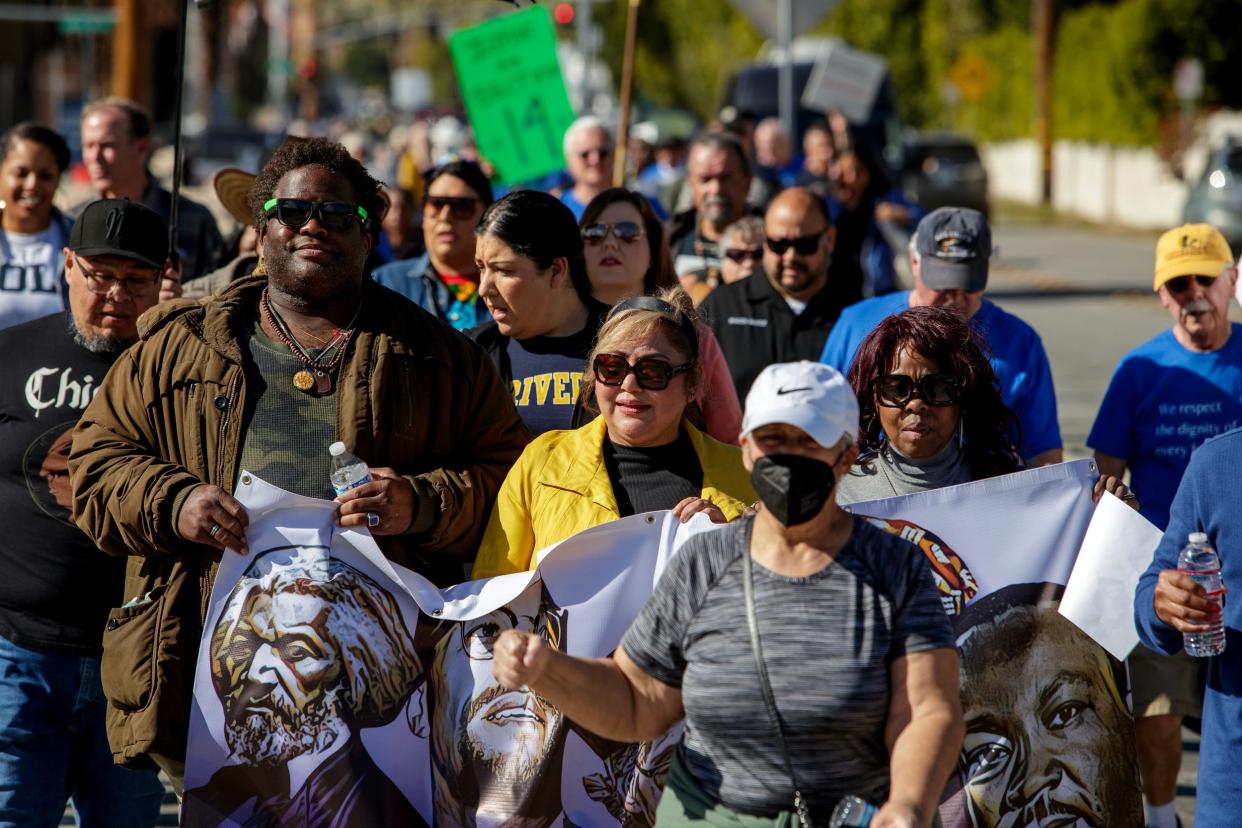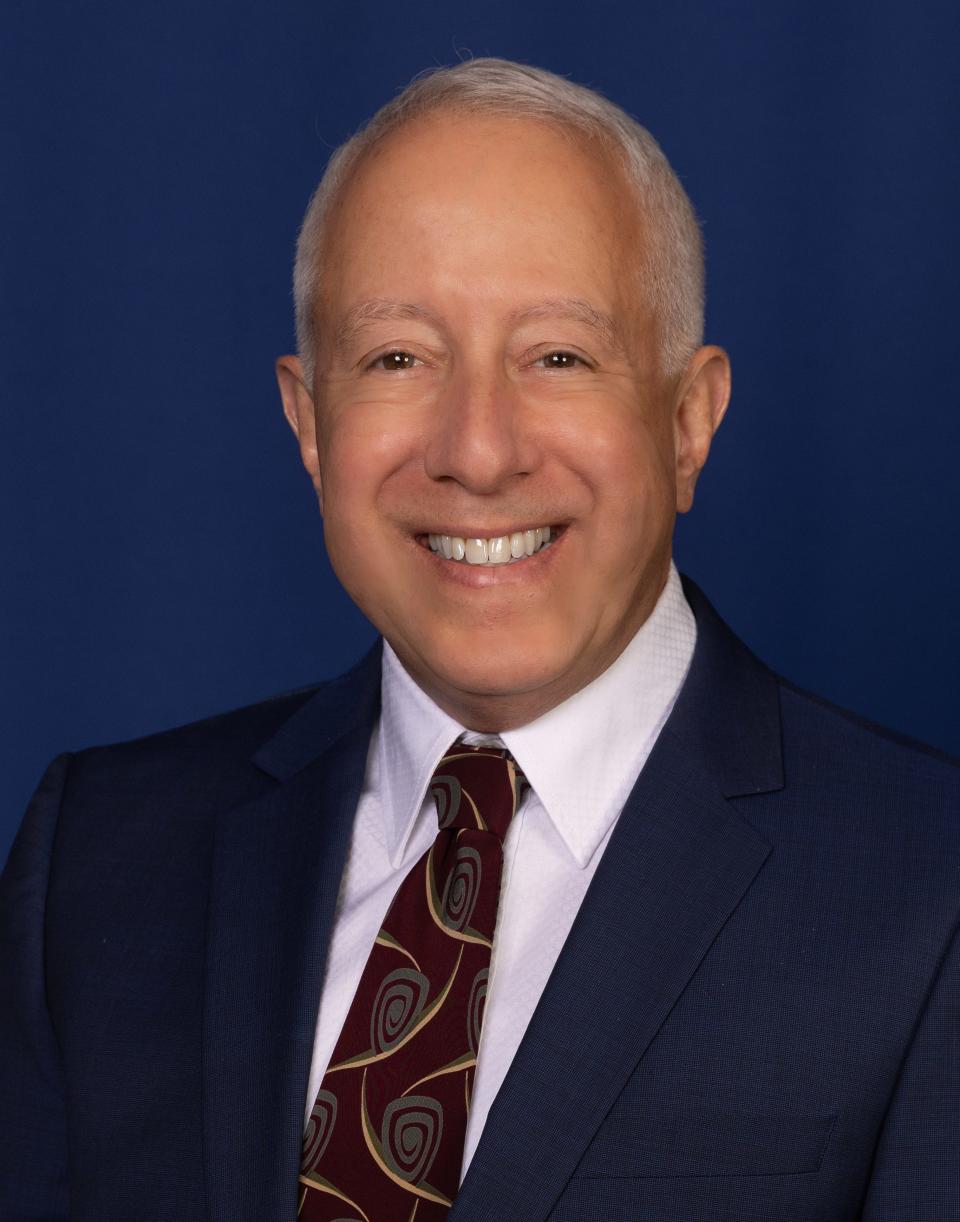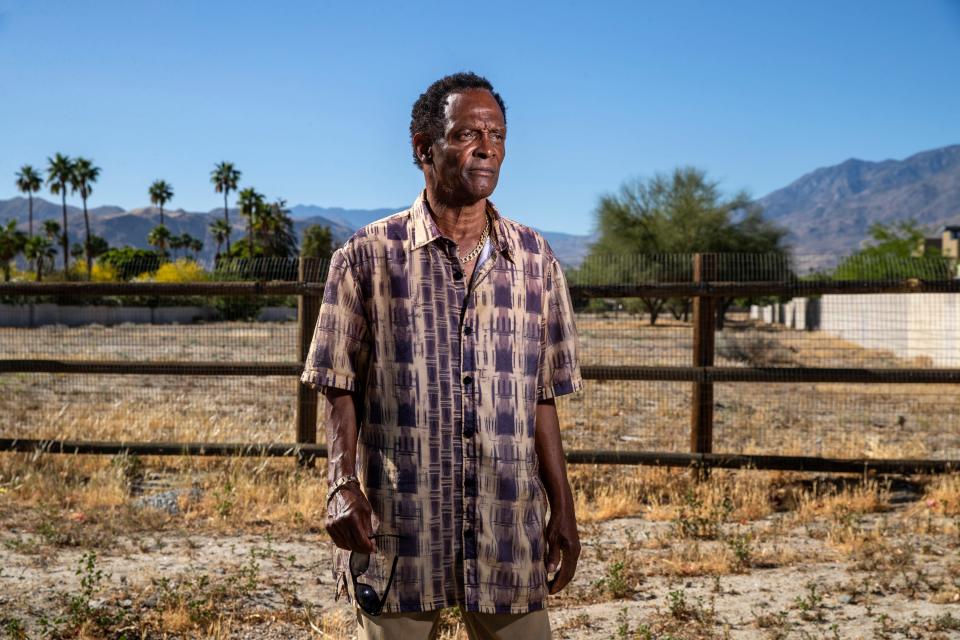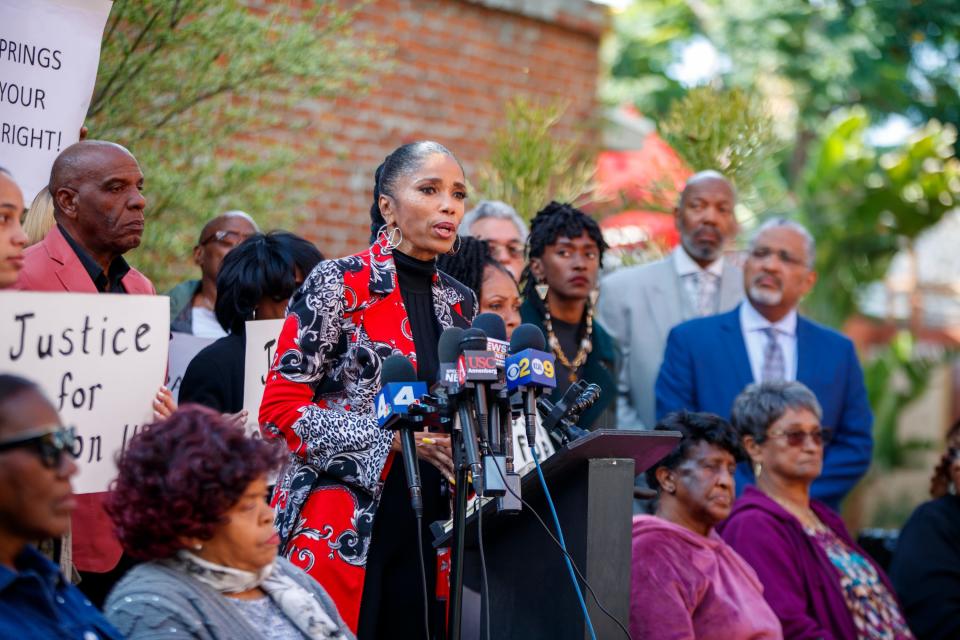Palm Springs mayor explains why council decided to offer $4.3M in Section 14 compensation

After declining to answer questions for months about the city's handling of the push for Section 14 reparations, Palm Springs Mayor Jeffrey Bernstein broke that silence this week.
Among other topics, he addressed why city council members decided to offer to pay compensation for 145 of the homes that were destroyed and why they did so without any of the historical research they earlier said was needed before they took action.
The mayor said council members still hope to have that kind of research done, but decided they already knew enough to conclude some of the city's actions were wrongful and worthy of compensation.

Closed-door talks and an offer
During a council meeting held April 27 of last year, Bernstein was part of a three-member majority that voted not to contract with a Columbia University team city staff recommended hiring to devise a reparations program. The three said instead that the city needed to hire a historian to research Section 14 and provide objective facts about the circumstances under which it was cleared before making a decision about reparations.
The council directed city staff to put out a request for proposals to hire that consultant.
But that never happened, and the council instead spent months discussing behind closed doors a legal claim filed by a group of former Section 14 residents and descendants of others who've died. After another such meeting earlier this month, the city announced it had sent an offer to attorneys for the group, which calls itself Section 14 Survivors.
The offer calls for the city to pay up to 145 households $29,494.81 each for what Bernstein said was the city’s wrongful role in clearing the homes where they lived in on rented Agua Caliente land.
Records show the city cleared some homes on Section 14 in the mid-1960s at the end of a yearslong process in which various entities, including the Bureau of Indian Affairs and Riverside County's health department, and the tribal owners themselves, ordered that those living in the homes be evicted and then the homes be demolished to allow the land to be redeveloped. That process occurred amid both a change in federal policy allowing Native American tribes to rent their land for longer periods and longstanding concerns about health, sanitation and unsafe structures on parts of Section 14.
On the day the council decided to send the offer to the attorney, Bernstein also announced that the city was recommitting to hiring a consultant to verify the history of Section 14 and taking several steps to address the harm the city had caused, including putting money into a land trust to build housing on the city's north side, where some of the affected families live.
The group’s attorney, Areva Martin, has since said her clients will not accept the $29,494.81 per home offer and want to continue to negotiate.
But the decision to make that offer without completing — or even starting — the process of hiring a historical consultant has generated questions and criticism from some in Palm Springs.
City has tried to find researcher
Bernstein addressed questions from The Desert Sun about that decision in an email this week, saying the city had not moved forward with the process to hire a researcher because it had not been able to find someone who wanted to do that work.
“Staff reached out to several universities and other potentially qualified consultants — and no one was interested at that time,” Bernstein said, without elaborating on how the city plans to find a researcher now.
Asked why the council had changed course and made an offer to resolve the claim before hiring an independent researcher, Bernstein did not directly answer, instead writing: “The council originally discussed a comprehensive program, but ultimately after more discussion it was decided to simplify the process and focus on a Historical Context Study, which will further the work the city has already done."
The Desert Sun also asked the mayor what the purpose was of moving forward with a fact-finding process when the council has already decided to take responsibility and offer compensation.
Bernstein said in response: “The Council values an external third party who will analyze historical documents and provide their perspective, which will provide the City and all stakeholders with a comprehensive report of Section 14.”
Mayor says offer based on city records
Asked how the council came to its decision without the historical research, Bernstein pointed to records and documents posted to the city website last year after they were found in a city storage area. The specific records he pointed to were receipts for demolition costs and a city council resolution appropriating $10,000 to the cleanup of Section 14.
It is widely accepted — including by many who are opposed to the city providing payment to those with ties to Section 14 — that city staff and resources were used in the burning and demolition of some homes in the 1960s.

However, larger questions around whether the city’s involvement was wrong, or even illegal, have been the subject of often tense debate for years. In the 2022 claim against the city, Martin refers to the demolition of homes on Section 14 as “a city engineered holocaust” and “racially motivated attacks” and calls the city’s actions “racially discriminatory and illegal.” (The "holocaust" phrase was initially used in a 1968 report by the California attorney general.)
However, some including a group called Friends of Frank Bogert, after the man who was mayor during much of the time in question, say that narrative leaves out crucial context.
That context, the group says, includes that the city provided resources to remove the homes at the behest of the land’s tribal owners, was reimbursed by the federal government for that work and made efforts to help residents purchase new homes in the city.
They also point out that the 1968 report on the clearing of Section 14 by a California deputy attorney general, despite being highly critical of the city, said it had not done anything illegal.
Asked about the federal reimbursement, Bernstein pointed to documents showing that the city had accepted a $5,000 reimbursement from the Bureau of Indian Affairs, which one city council resolution said was "desirous of cooperating with the City of Palm Springs" in furthering the program to "clean up" Section 14.
In his response to The Desert Sun, Bernstein did not elaborate on how the council decided that it was appropriate for the city to compensate the families. In comments he made at the April 11 city council meeting, he said he and the rest of the council unanimously recognized city funds were used to the clear the land and that “we know that we as a city need to right that wrong.”
Bernstein referred follow-up questions seeking to clarify how the council had determined the city’s involvement was wrong to a city spokesperson, Amy Blaisdell. She did not explain further, instead reiterating that “The City Council spent several hours in very thoughtful, robust discussion” and was united on making the offer.
Bernstein did explain one aspect of the council's decision: how it determined that the city would offer to pay for 145 homes. He cited an abatement chronology posted on the city website that stated the city was involved in the abating of 235 structures, 92 of which were determined to have been “completely abandoned.”

The Desert Sun shared Bernstein's response with Martin, who called the city’s calculations “deeply flawed” and said that flawed analysis resulted in unrealistically low valuations of both the number of homes cleared and the present value of those homes and the possessions they contained.
Bernstein added that the city will decide who is eligible for compensation using census and school records, old phone/address directories and birth certificates to determine which families lived in homes at the time they were destroyed.
Both Blaisdell and Bernstein told The Desert Sun that the city is planning to continue the dialogue with the Section 14 Survivors group and will only make cash payments after a comprehensive and fair verification process. They said that process could occur either through a legal settlement with the Section 14 Survivors group or individual settlements with direct payments to individuals.
Martin, meanwhile, said her clients remain hopeful the city will continue to negotiate in good faith.
“We have consistently asserted that the survivors and descendants are deeply rooted in Palm Springs and its success,” she said. “They have also consistently stated a desire to establish a long-term partnership with the city to increase tourism and inclusivity, while ensuring that a settlement is reached that also addresses the significant losses my clients have sustained.”
Paul Albani-Burgio covers growth, development and business in the Coachella Valley. Follow him on Twitter at @albaniburgiop and email him at paul.albani-burgio@desertsun.com.
This article originally appeared on Palm Springs Desert Sun: Palm Springs mayor explains Section 14 compensation offer


